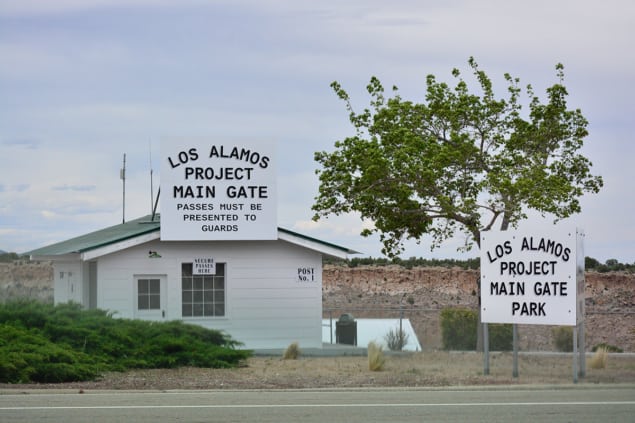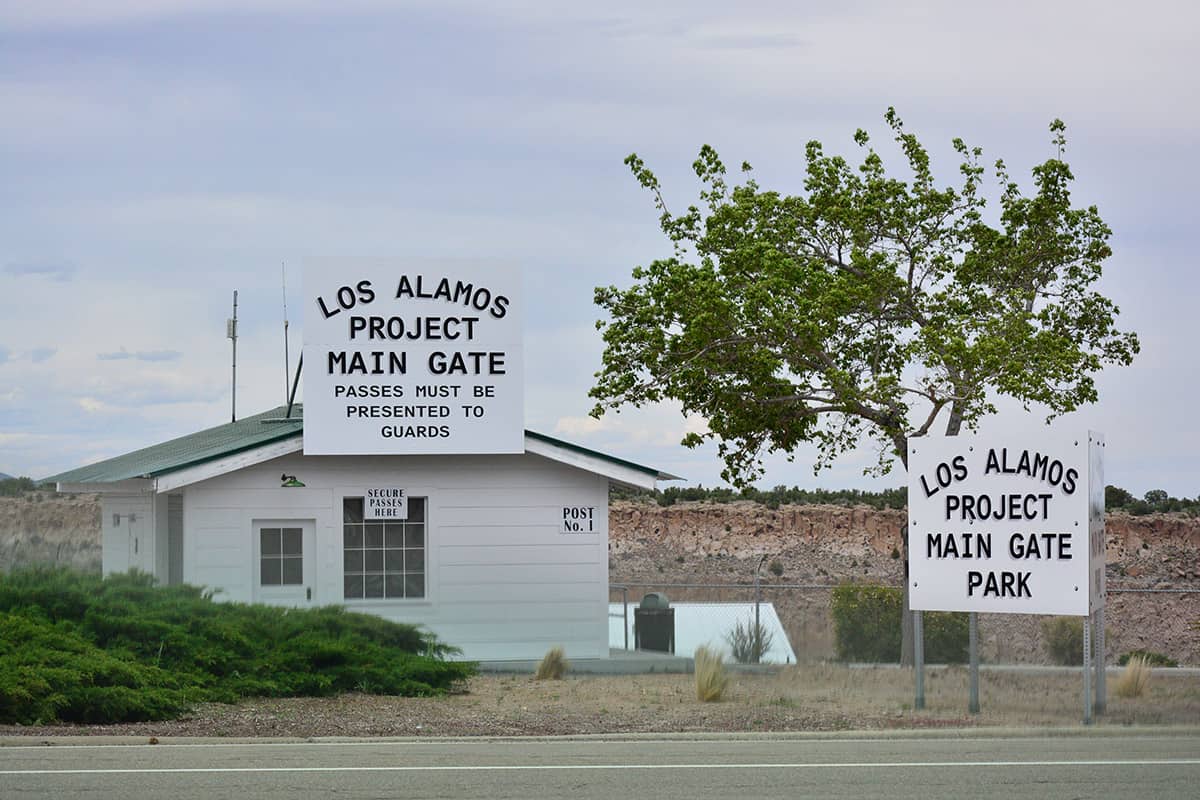Margaret Harris reviews Restricted Data: the History of Nuclear Secrecy in the United States by Alex Wellerstein
 Few events in history – and even fewer in the history of physics – have generated as much counterfactual speculation as the atomic bombings of Hiroshima and Nagasaki. Did the bombings save lives by forestalling a US invasion of Japan? Could their immense toll of human suffering – an estimated 210,000 deaths, plus hundreds of thousands of survivors injured and sickened by radiation – have been avoided by warning Japan’s generals of the bomb’s power and demanding they surrender? As with all counterfactuals, the answers to these questions are unknowable, but that has not prevented armchair historians from debating them, with diminishing returns (though not, alas, diminishing enthusiasm from book publishers).
Few events in history – and even fewer in the history of physics – have generated as much counterfactual speculation as the atomic bombings of Hiroshima and Nagasaki. Did the bombings save lives by forestalling a US invasion of Japan? Could their immense toll of human suffering – an estimated 210,000 deaths, plus hundreds of thousands of survivors injured and sickened by radiation – have been avoided by warning Japan’s generals of the bomb’s power and demanding they surrender? As with all counterfactuals, the answers to these questions are unknowable, but that has not prevented armchair historians from debating them, with diminishing returns (though not, alas, diminishing enthusiasm from book publishers).
Fortunately, Alex Wellerstein is not that kind of historian. He is an expert in science and technology studies at the Stevens Institute of Technology in New Jersey, US, and his book Restricted Data explores a much less examined (and thus far more interesting) counterfactual: What if the secrecy surrounding nuclear weapons had ended with those first atomic bombings?
Today, the existence of a nuclear security state – that is, an institution charged with shielding nuclear know-how not only from a country’s enemies but even from its own citizens – may seem normal. Not so in 1945. Many Manhattan Project physicists, Niels Bohr and Robert Oppenheimer among them, viewed the secrecy involved in building the first atomic bombs as contrary to scientific ideals. Even Edward Teller, the hawkish “father of the H-bomb”, had doubts about limiting the free exchange of nuclear information, albeit for idiosyncratic reasons (he felt it hindered weapons development). In US political circles, prohibitions on what could be said, and by whom, were seen as antithetical to American values – perhaps even contrary to the First Amendment of the US Constitution, which guarantees the right to free speech. How, then, did information about nuclear physics become so verboten that releasing it without US government approval could be punished with fines, prison or even execution?
To answer this question, Wellerstein draws on a voluminous body of documentary research, supplemented by interviews with more than two dozen living or recently deceased participants in nuclear history. One of the great ironies of Restricted Data is that none of this research involved information that is currently secret. Though Wellerstein is clearly well versed in the art of filing Freedom of Information Act requests, he has no security clearance and professes not to want one. That a book of such calibre and depth can nevertheless be written is a testament both to Wellerstein’s scholarship and to one of the book’s central contentions: knowledge, once created, is very hard to keep secret, and nuclear knowledge – stemming as it does from physics principles accessible to anyone with an intelligent mind and the right training – is arguably harder than most.
Plenty of people tried, of course. Between the end of the Second World War and the Soviet Union’s first atomic test in 1949, a vast and unwieldy bureaucracy sprang up from the fertile soil of the Manhattan Project. Its mission, set out in the Atomic Energy Act of 1946, was to keep “all data concerning the manufacture or utilization of atomic weapons, the production of fissionable material, or the use of fissionable material in the production of power” in the hands of a carefully vetted few.
In the context of the early Cold War, this definition of “Restricted Data” might seem sensible. However, Wellerstein points out that it is in fact extremely far-reaching. Among other consequences, he writes, “the statute was open to the interpretation that nuclear weapons information is ‘born secret,’ no matter who or where the new information comes from”. In principle, scientists in other countries, including allies like the UK, could fall foul of it. Certainly, domestic scientists who unwittingly strayed into restricted territory (knowledge of what was useful for weapons was, naturally, also restricted) were likely to have their work declared off-limits by the newly created Atomic Energy Commission (AEC). Worse, the “Restricted” label was soon covertly extended to cover information that “might have an adverse effect on the position of the commission”. Most grievously, this included a series of experiments in the late 1940s in which US scientists injected terminally ill patients with plutonium without their knowledge or consent, to determine how quickly the body excretes radiation.

Celebrating a century of nuclear isomers
In the book’s later chapters, Wellerstein chronicles efforts by various individuals to cast light on this dark territory. One such individual, ironically, was US President Richard Nixon, who signed an Executive Order in 1972 disallowing “the use of secrecy to conceal errors or avoid embarrassment”. Another, more satisfyingly, was Hazel O’Leary, who in 1993 became the first woman and (so far) only African American to lead the Department of Energy (DOE), one of the AEC’s successors. Under her tenure, the department declassified more information than it had in the entire previous history of the DOE and its predecessors – including information on the unethical plutonium experiments and their role in setting occupational health limits for radiation exposure.
The more the authorities tried to keep bomb designs out of view, the more attention they drew to them
Ultimately, though, Wellerstein shows that the US nuclear secrecy edifice cracked less through individual efforts than through a high-stakes version of the Streisand effect – where attempts to hide information end up generating more interest in it. Beginning in the cynical 1970s and extending through to the conspiracy-minded present, the more the authorities tried to keep bomb designs, stockpile numbers and so on out of view, the more attention they drew to them. While many secrets still exist, Wellerstein argues convincingly that their preservation is a matter of great tension for the US, which remains in this respect – as in so many others – “a simmering mix of high-minded idealism and ugly, fearful power”.
- 2021 University of Chicago Press $35.00hb 528pp
